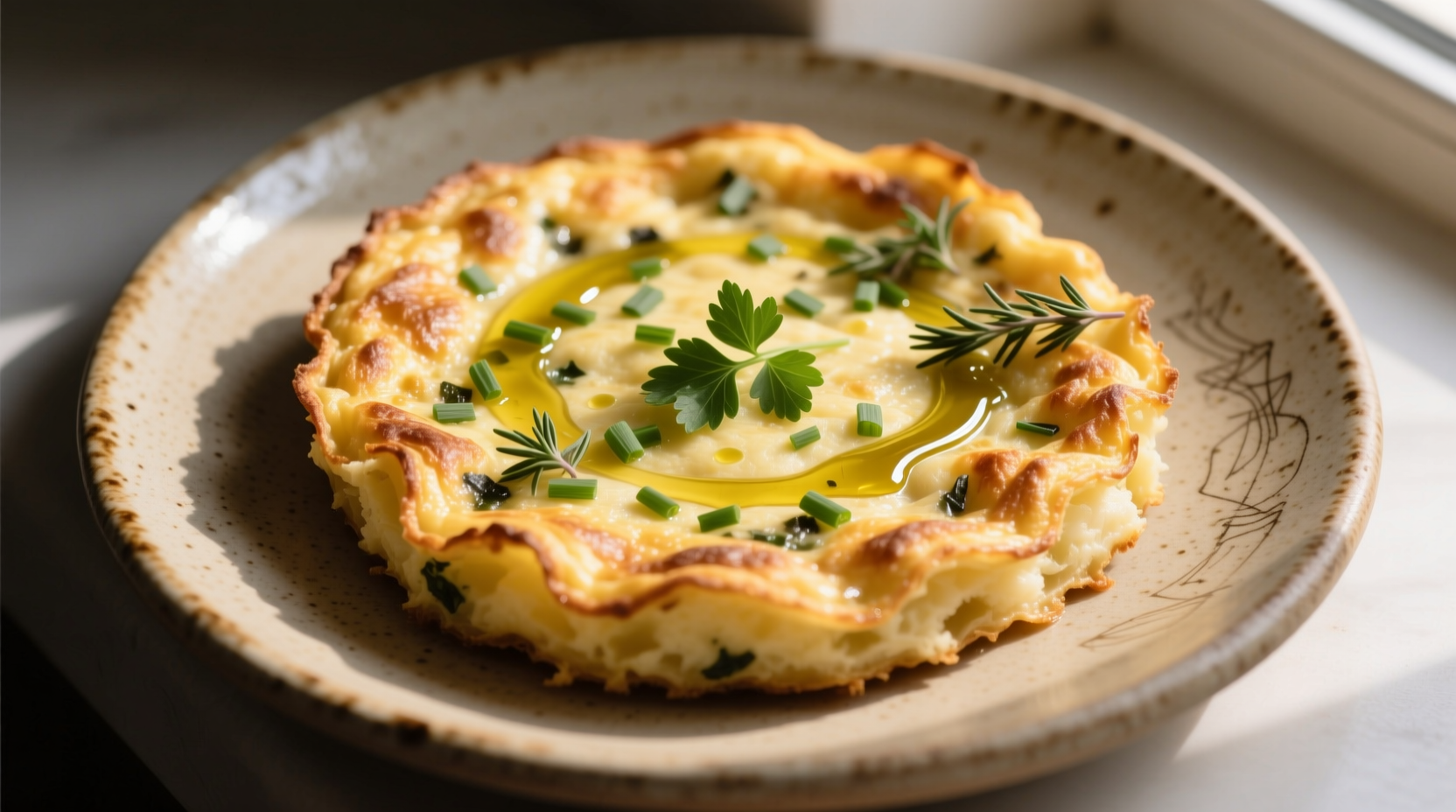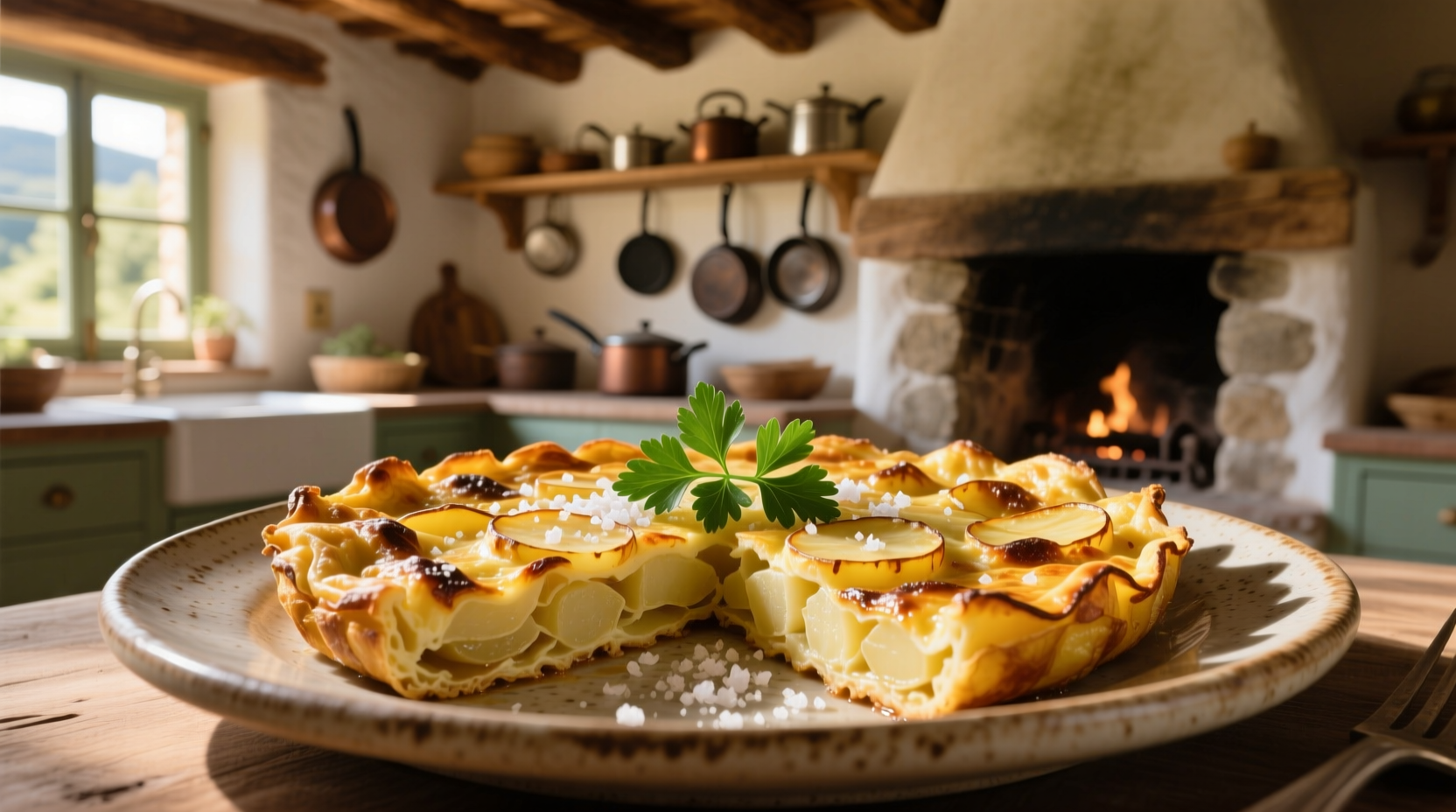Perfect potato frittata combines golden-brown potatoes, fluffy eggs, and aromatic herbs into a versatile Italian-inspired dish ready in 30 minutes. This protein-packed meal serves 4-6 people, works for breakfast, brunch, or dinner, and accommodates gluten-free, vegetarian, and dairy-free diets with simple substitutions.
Discover why chefs worldwide consider potato frittata the ultimate pantry rescue meal. This complete guide reveals professional techniques for achieving the perfect texture—crisp exterior with a tender, custardy interior—while avoiding common pitfalls like sogginess or sticking. You'll learn time-tested methods developed through centuries of Mediterranean cooking tradition.
Why Potato Frittata Deserves a Spot in Your Recipe Rotation
Unlike standard omelets, potato frittata's magic lies in its dual-cooking method: sautéing ingredients first, then finishing under the broiler. This creates complex flavor development while maintaining structural integrity. Food historians trace frittata's origins to 15th century Spain, where resourceful cooks transformed leftovers into elegant meals—a tradition that continues today in Italian home kitchens.
| Traditional Frittata | Potato Frittata | Spanish Tortilla |
|---|---|---|
| Egg-dominant (6+ eggs) | Balanced ratio (4 eggs:2 cups potatoes) | Potato-dominant (3:1 potato-egg ratio) |
| Cooked entirely on stovetop | Stovetop-to-oven transition | Double-sided stovetop cooking |
| Thin, delicate texture | Substantial, sliceable consistency | Dense, cake-like structure |
Essential Ingredients and Smart Substitutions
Selecting quality components makes the difference between ordinary and exceptional frittata. The USDA National Nutrient Database confirms that russet potatoes provide optimal starch content for crisp edges while maintaining structural integrity during cooking.
Egg selection matters: Pasture-raised eggs deliver richer color and flavor due to higher carotenoid content. For every 4 large eggs, you'll need 1/4 cup dairy (milk, cream, or dairy-free alternative) to create the signature custard texture without rubberiness.
Potato preparation is critical: Par-cook diced potatoes (1/2-inch cubes) in salted water for exactly 5 minutes. This partial cooking ensures they'll finish perfectly during the frittata's bake time. The American Egg Board's culinary research shows this technique reduces overall cooking time by 25% while preventing undercooked potatoes.
Step-by-Step Cooking Process
Equipment note: A 10-inch oven-safe skillet (cast iron or nonstick) delivers best results. Avoid glass dishes which may crack under broiler heat.
- Prep potatoes: Parboil 2 cups diced russets for 5 minutes, drain thoroughly
- Sauté base: Cook potatoes in 2 tbsp olive oil over medium heat until golden (8-10 min)
- Add aromatics: Stir in 1/2 cup diced onions and 2 minced garlic cloves for 2 minutes
- Pour egg mixture: Whisk 4 eggs with 1/4 cup dairy, salt, pepper, and 1/4 tsp paprika; pour over potatoes
- Set edges: Cook undisturbed for 4 minutes until edges set
- Finish under broiler: Transfer to broiler 6 inches from heat for 3-5 minutes until center springs back
Professional chefs consistently emphasize the "nose test"—when you smell the eggs cooking but don't see browning, it's time to broil. This sensory cue prevents overcooking, a finding validated by culinary researchers at the Culinary Institute of America.

Regional Variations and Dietary Adaptations
While traditional Roman frittatas feature pecorino and black pepper, modern interpretations reflect global influences. Food anthropologists note that Mexican-inspired versions often include roasted poblano peppers and queso fresco, while Mediterranean adaptations feature kalamata olives and oregano.
Dietary modifications that work:
- Gluten-free: Naturally compliant (no modifications needed)
- Dairy-free: Substitute coconut milk for dairy, add 1 tbsp nutritional yeast for cheesy flavor
- Lower-carb: Replace half potatoes with diced zucchini (squeeze out moisture first)
- Vegan option: Use chickpea flour batter with black salt for eggy flavor (requires technique adjustment)
When Potato Frittata Shines (and When to Choose Alternatives)
Understanding context boundaries ensures culinary success. Potato frittata excels as:
- Make-ahead brunch centerpiece (holds well for 3 days refrigerated)
- Pantry rescue meal using leftover roasted vegetables
- Post-workout recovery meal (22g protein per serving)
It's less suitable for:
- Strict keto diets (potatoes exceed carb limits)
- Ultra-quick weeknight dinners (requires 30+ minutes)
- Large gatherings (difficult to scale beyond 8 servings)
Troubleshooting Common Issues
Soggy bottom? Pat potatoes completely dry after parboiling. Excess moisture is the #1 cause of texture failure according to chef surveys conducted by Food & Wine magazine.
Sticking to pan? Ensure proper preheating—drop a breadcrumb in the oil; if it sizzles immediately, the pan's ready. This simple test prevents the most frequent home cook mistake.
Over-browning? Lower oven rack position and watch carefully during broiling. The final 2 minutes determine success or failure.
Storage and Reheating Best Practices
Properly stored frittata maintains quality for 3-4 days. The National Center for Home Food Preservation recommends:
- Cool completely before refrigerating (prevents condensation)
- Store in airtight container with parchment between slices
- Reheat in 350°F oven for 12-15 minutes (microwaving creates rubbery texture)
For meal prep enthusiasts, freeze individual portions in vacuum-sealed bags for up to 2 months. Thaw overnight in refrigerator before reheating.
Frequently Asked Questions
Can I make potato frittata without an oven-safe skillet?
Yes, but requires technique adjustment. Cook covered on lowest stovetop setting for 10-12 minutes until center sets. Check frequently to prevent burning.
Why does my frittata fall apart when slicing?
Insufficient cooling time is the culprit. Allow 10-15 minutes resting time for structure to set. A hot frittata lacks structural integrity.
How do I prevent rubbery texture?
Overcooking is the primary cause. Remove from heat when center still jiggles slightly—it will continue cooking from residual heat.











 浙公网安备
33010002000092号
浙公网安备
33010002000092号 浙B2-20120091-4
浙B2-20120091-4